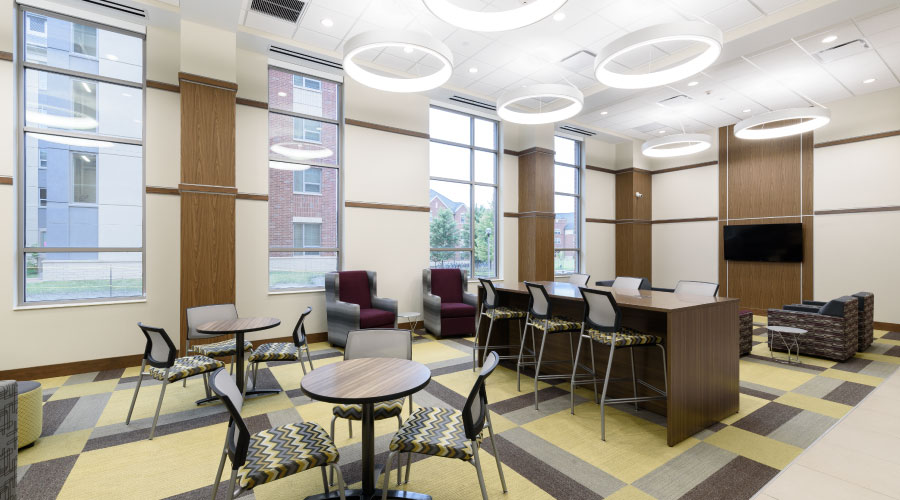Combining Aesthetics With Safety, Reliability, and Performance
Effective landscape and exterior lighting is essential in creating positive first impressions for visitors to institutional and commercial buildings. But these lighting systems represent more than simply an aesthetic issue.
This type of lighting also must enhance security and safety for pedestrians and motor vehicles moving around and among these facilities, and maintenance and engineering managers must consider their reliability and ease of maintenance to ensure the long-term system performance.
There is more. A growing number of municipalities have implemented so-called dark sky ordinances to curb unnecessary lighting. Energy codes now regulate the exterior environment as closely as the interior environment. And technology advances, such as those related to light-emitting diodes (LED), are changing the specification process for managers.
By understanding these and other interconnected issues, maintenance and engineering managers will be better able to ensure that landscape lighting systems deliver the short-and long-term benefits their organizations demand.
Security Considerations
As more facilities use camera surveillance to provide enhanced security, the quality of illumination is becoming essential for successful application of the technology. All cameras have an optimal illumination range and an optimal uniformity ratio within which they work. Technicians must program this information and the lighting for best results.
New lighting technologies — including LEDs, induction, and plasma sources — are changing the opportunities for site lighting and security, and advanced controls systems can fine-tune lighting system use based on the time of day and occupancy patterns.
Generally, to provide visual comfort along a walking path, it is not necessary to achieve perfectly uniform lighting, as long as light levels are consistent. But for surveillance purposes, uniform lighting might be necessary, so managers need to ensure the system's design can meet both needs.
Understanding the types of camera technology a particular area uses also is critical, because different technologies — analog, digital and IP — have different illumination requirements.
Safe, Efficient, Pleasing
Exterior lighting systems need to meet two seemingly conflicting demands — the need to provide enough light to see and feel safe, and the desire to reduce energy use and maintenance costs. But if managers carefully select light sources and fixtures, these demands do not need to conflict.
High-pressure sodium (HPS), the ubiquitous yellowish-pink light used to illuminate many city streets and corporate and university campuses, has been the primary light source for such areas since it was invented in the 1960s, primarily because of its long life and overall efficiency.
Metal halide (MH) lighting has made some inroads in applications where color quality is a primary concern — especially in retail and hospitality environments — but it has not overtaken HPS, largely because of its shorter life span.
The muddy, dull environment HPS lighting can create has caused many managers to over-light nighttime environments in order to create adequate visibility. Where areas have been converted to so-called white light sources with a high color rendering index (CRI) — such as ceramic metal halide, induction, and higher-quality LEDs — the light levels can be lower and still produce adequate illumination, though researchers still are trying to determine how much lower they can be.
It is safe to say that widespread use of these better sources at current illumination standards will increase levels of light pollution in cities. So it is important to evaluate light levels in conjunction with the light source in order to determine adequate levels.
What About LEDs?
Most of the buzz in the lighting industry surrounds LED sources because they are advertised as more efficient and providing a longer performance life than other sources, but neither claim is true. LED efficiency is improving daily, but in products currently available, only the very best ones approach the efficiency of other, more conventional sources.
One reason LEDs can be used at a lower wattage than the HPS and MH they often replace is that LEDs distribute light differently. With a well-designed optical system, they cut the amount of waste, so the light they do emit is more useful. In addition, the white light they produce appears to emit more illumination than the HPS they replace.
While managers can specify some excellent LED products, many poor-quality products also are available, so managers still must beware in specifying this technology. To find the best products, managers should look for those marketed by established lighting manufacturers that have a long history of producing quality products.
It is important to visually inspect every LED fixture, verify the terms of its warranty, and obtain the product from a reputable lighting-fixture manufacturer. A 10-year warranty from a manufacturer that has been in business for only three years is suspect, at best.
Related Topics:













